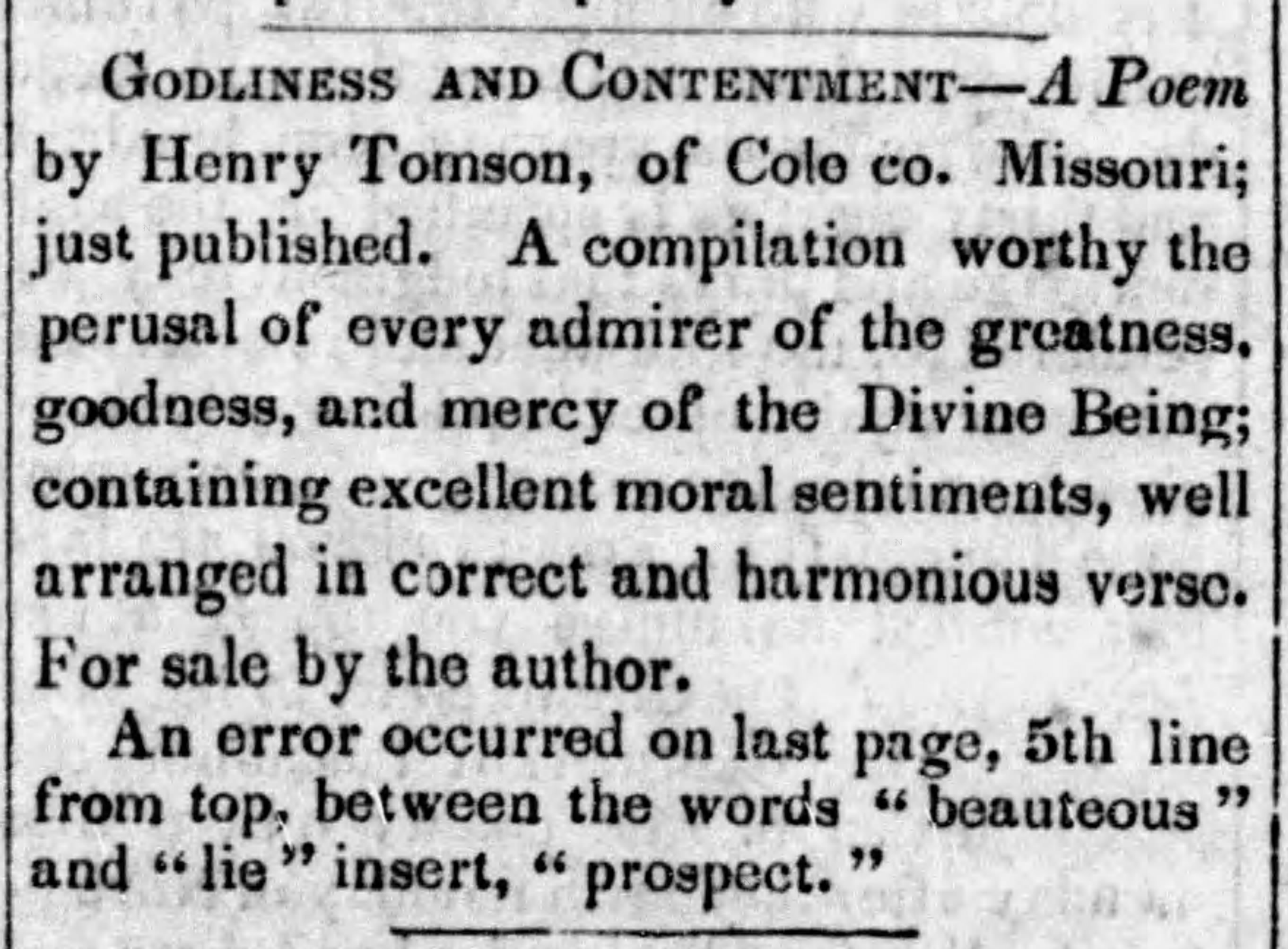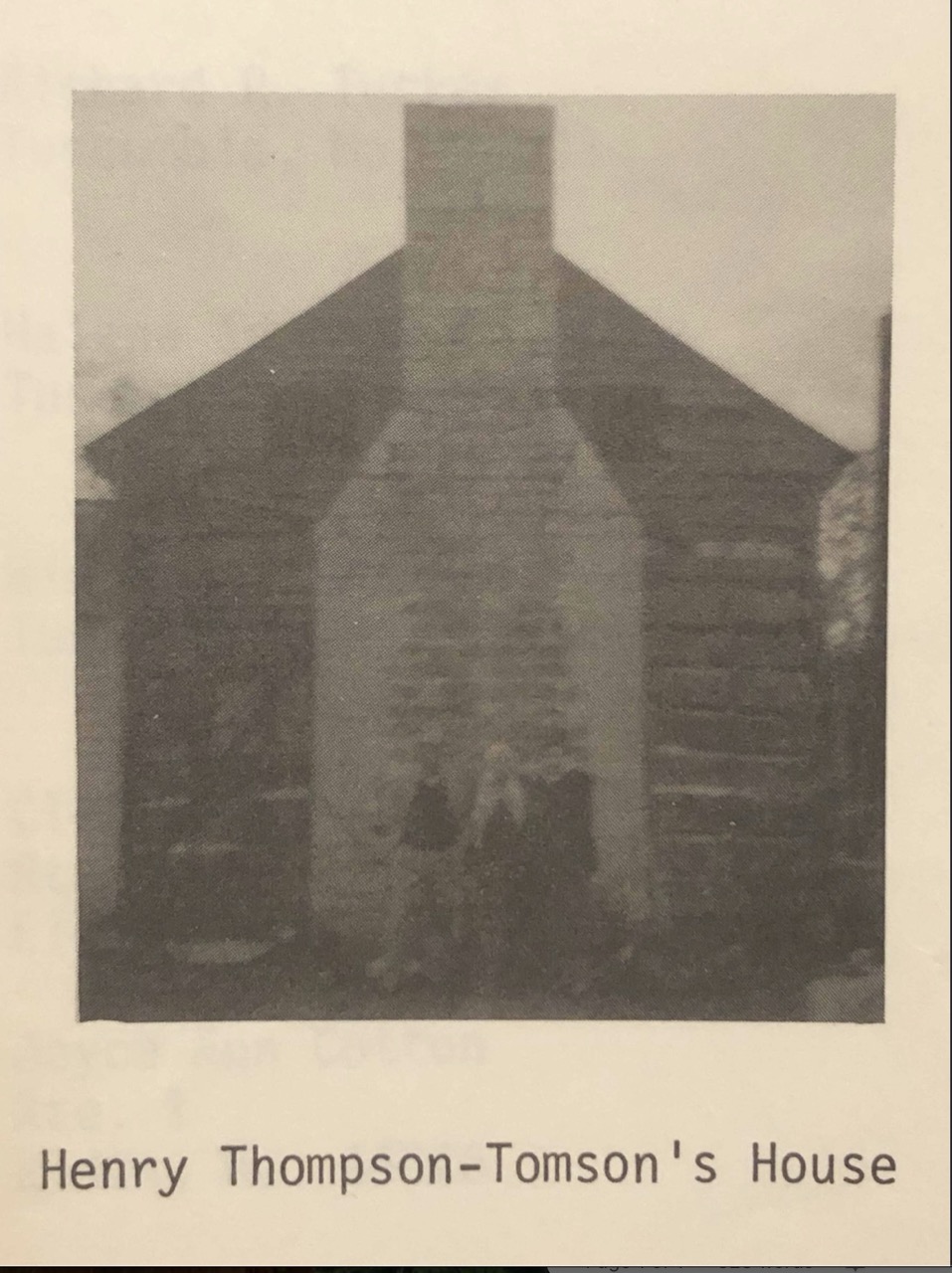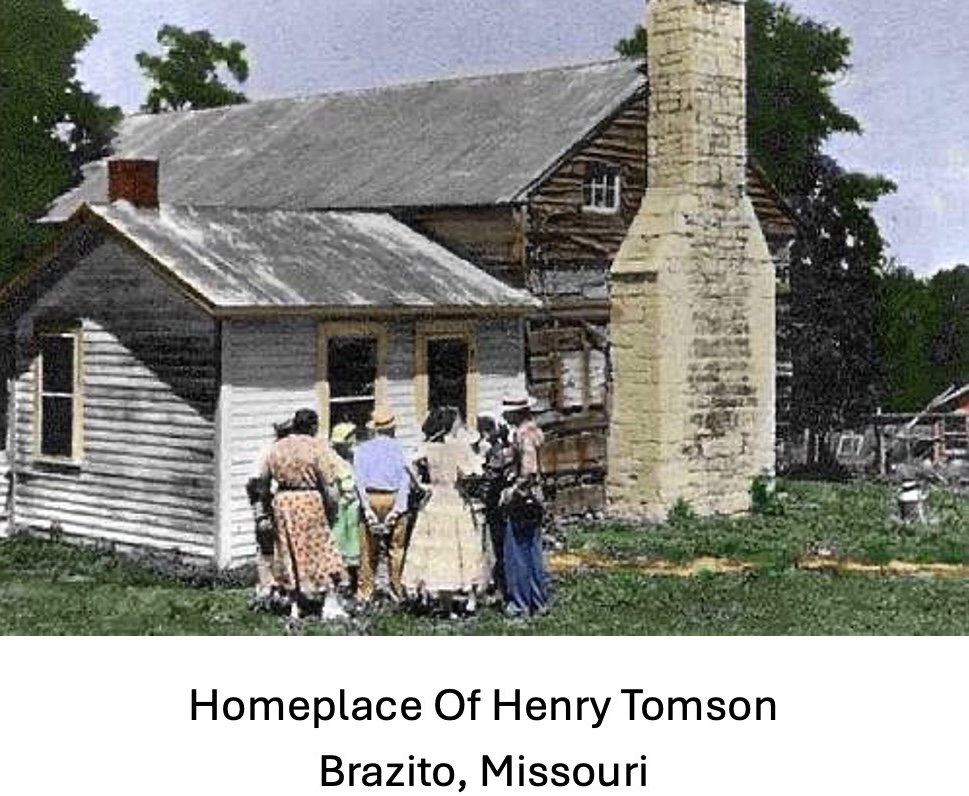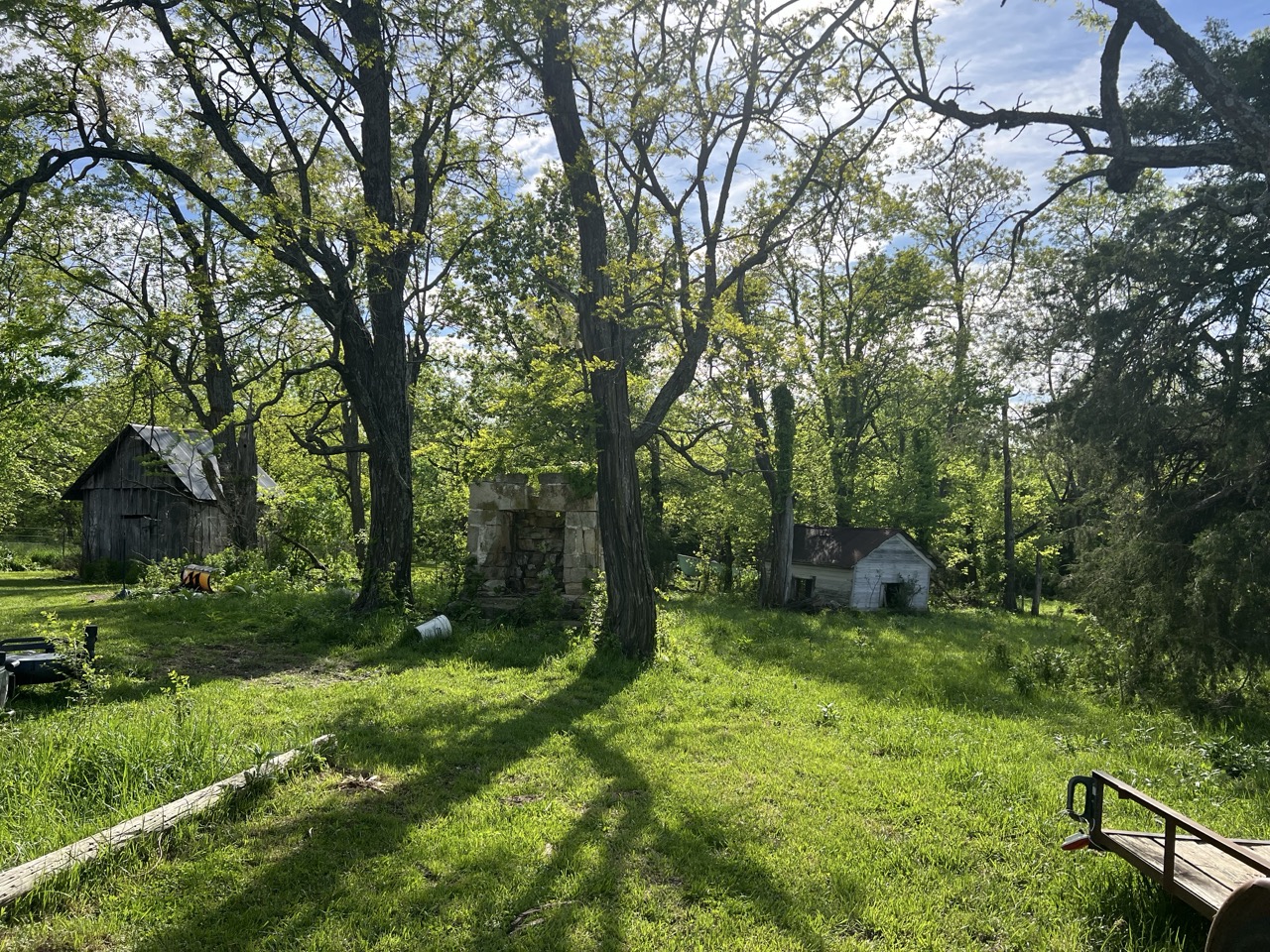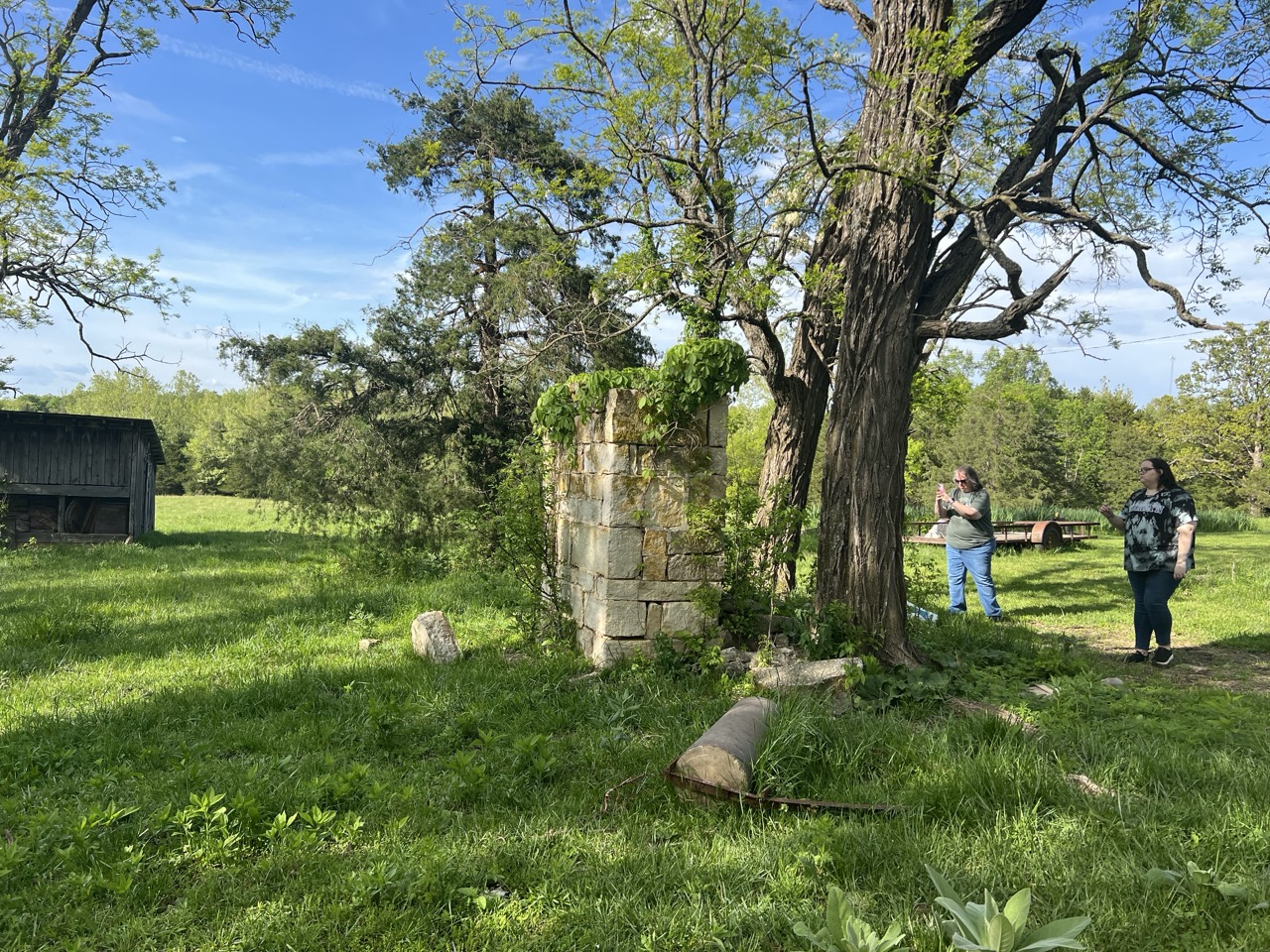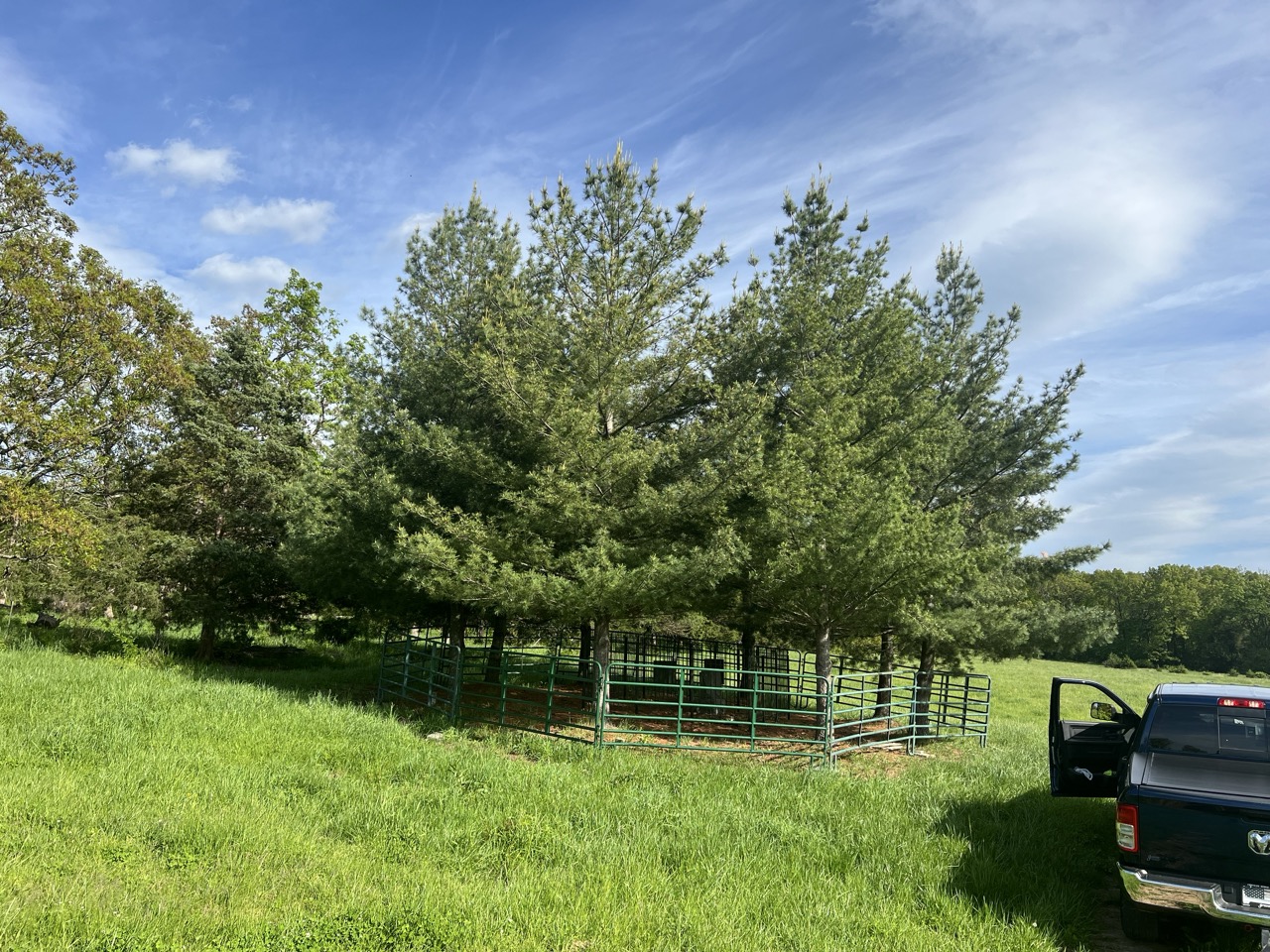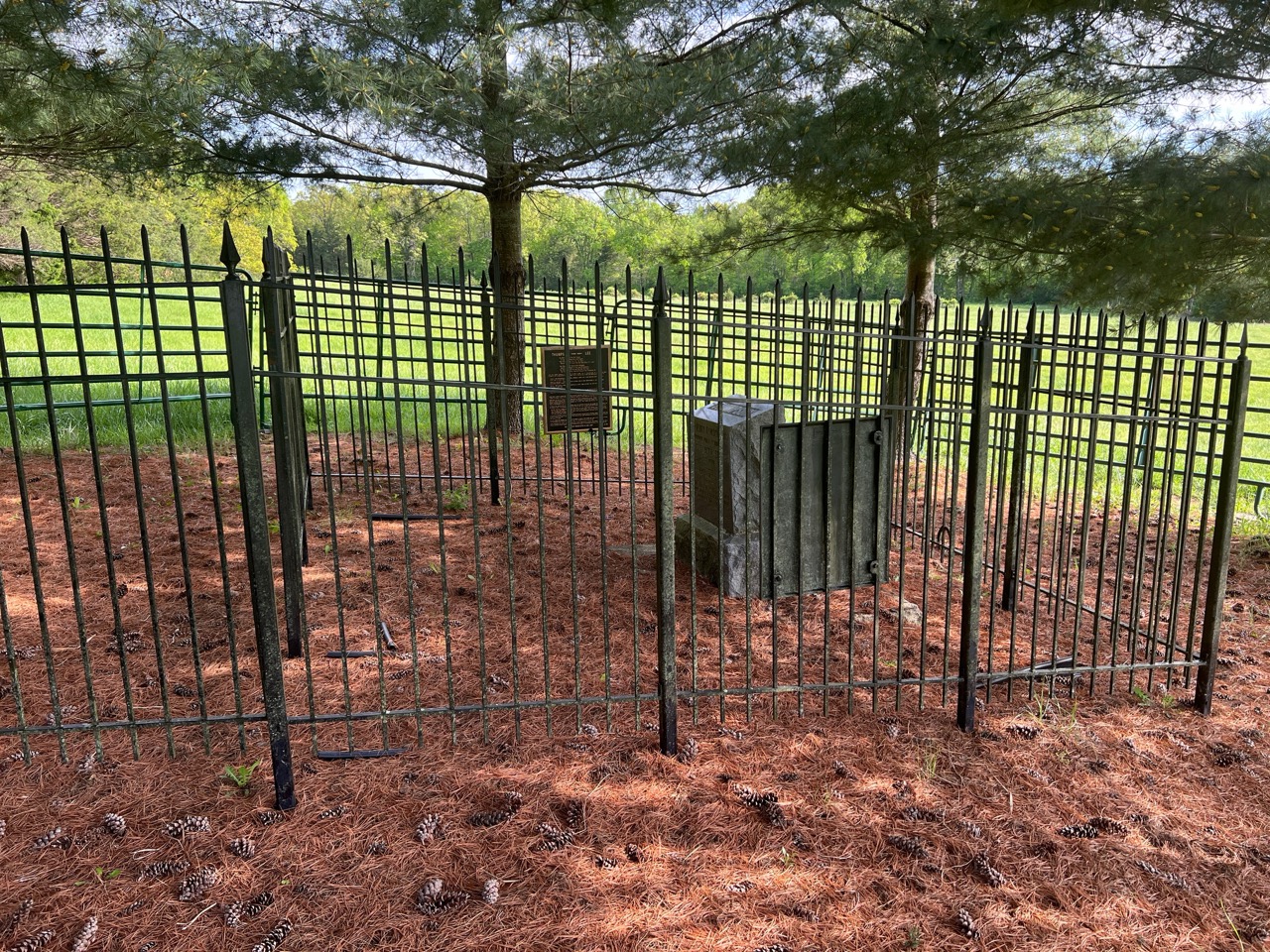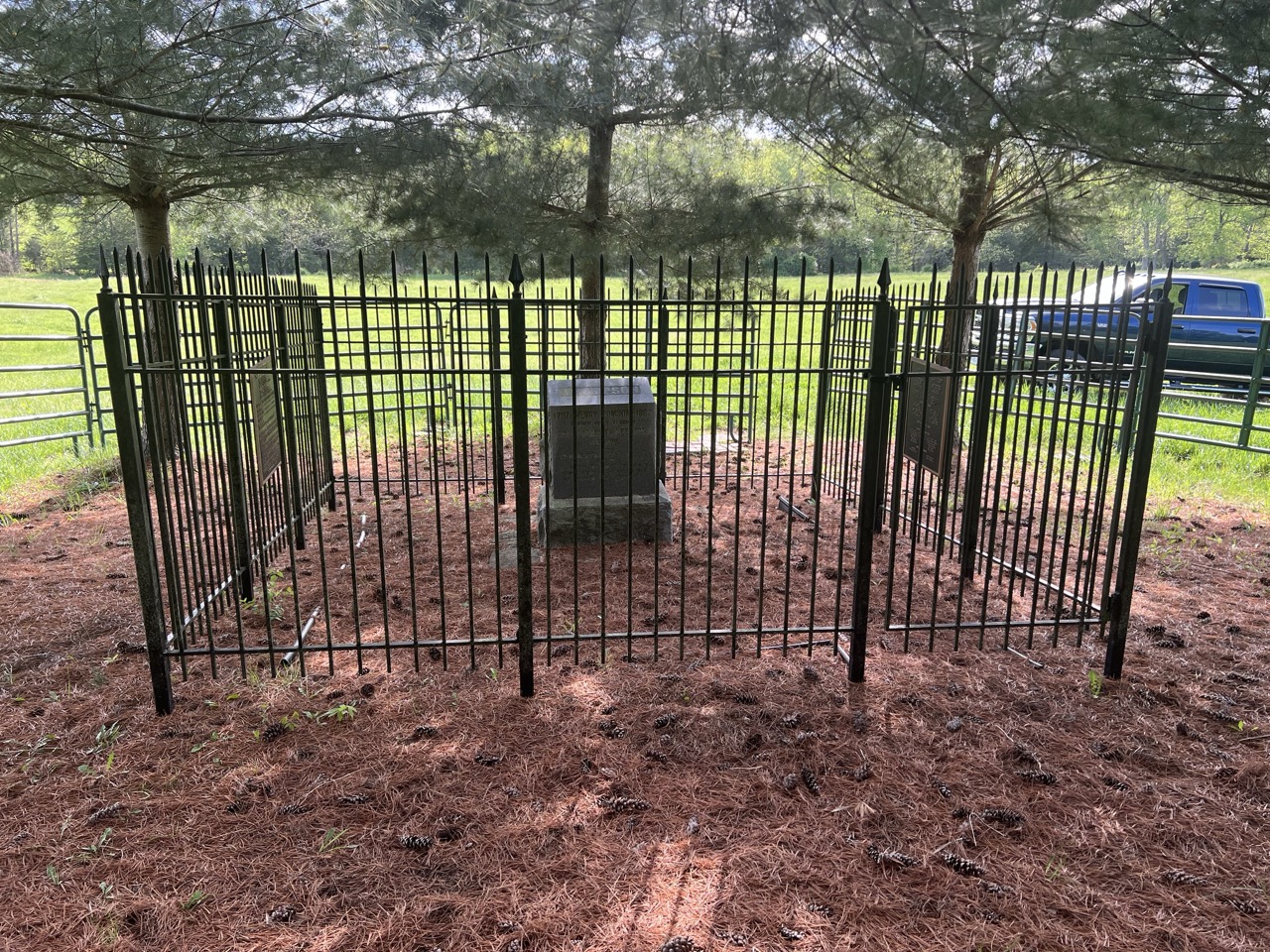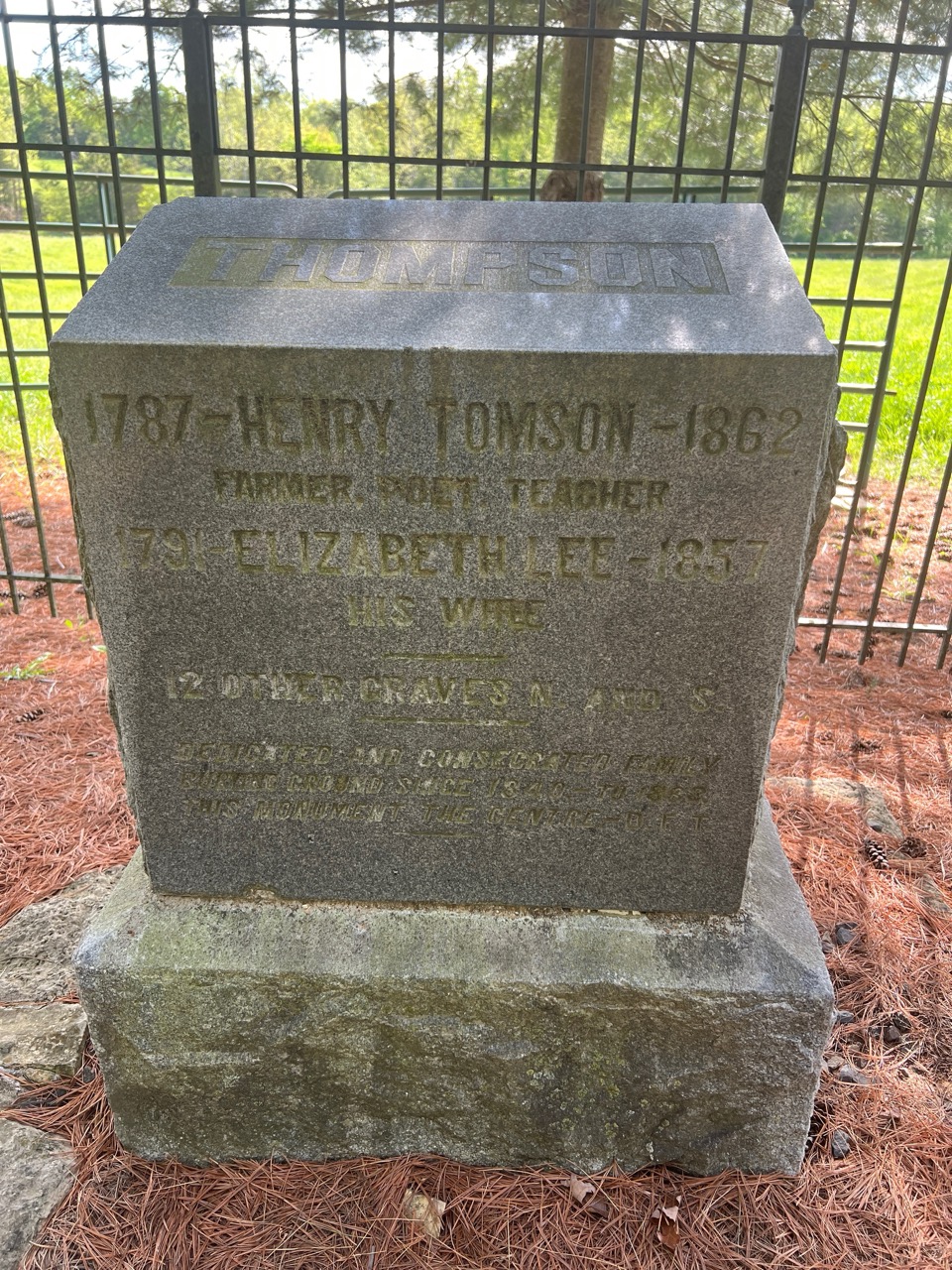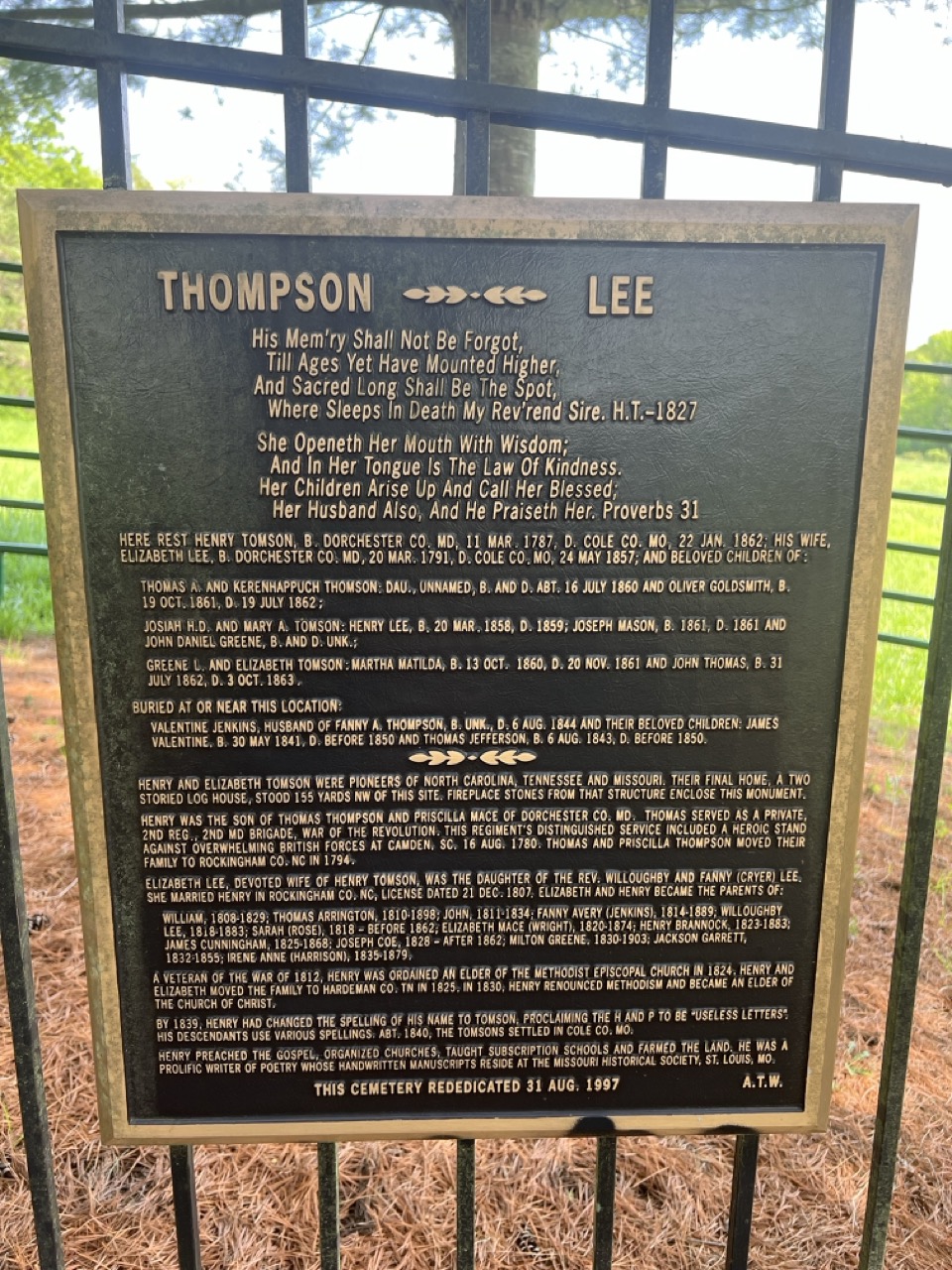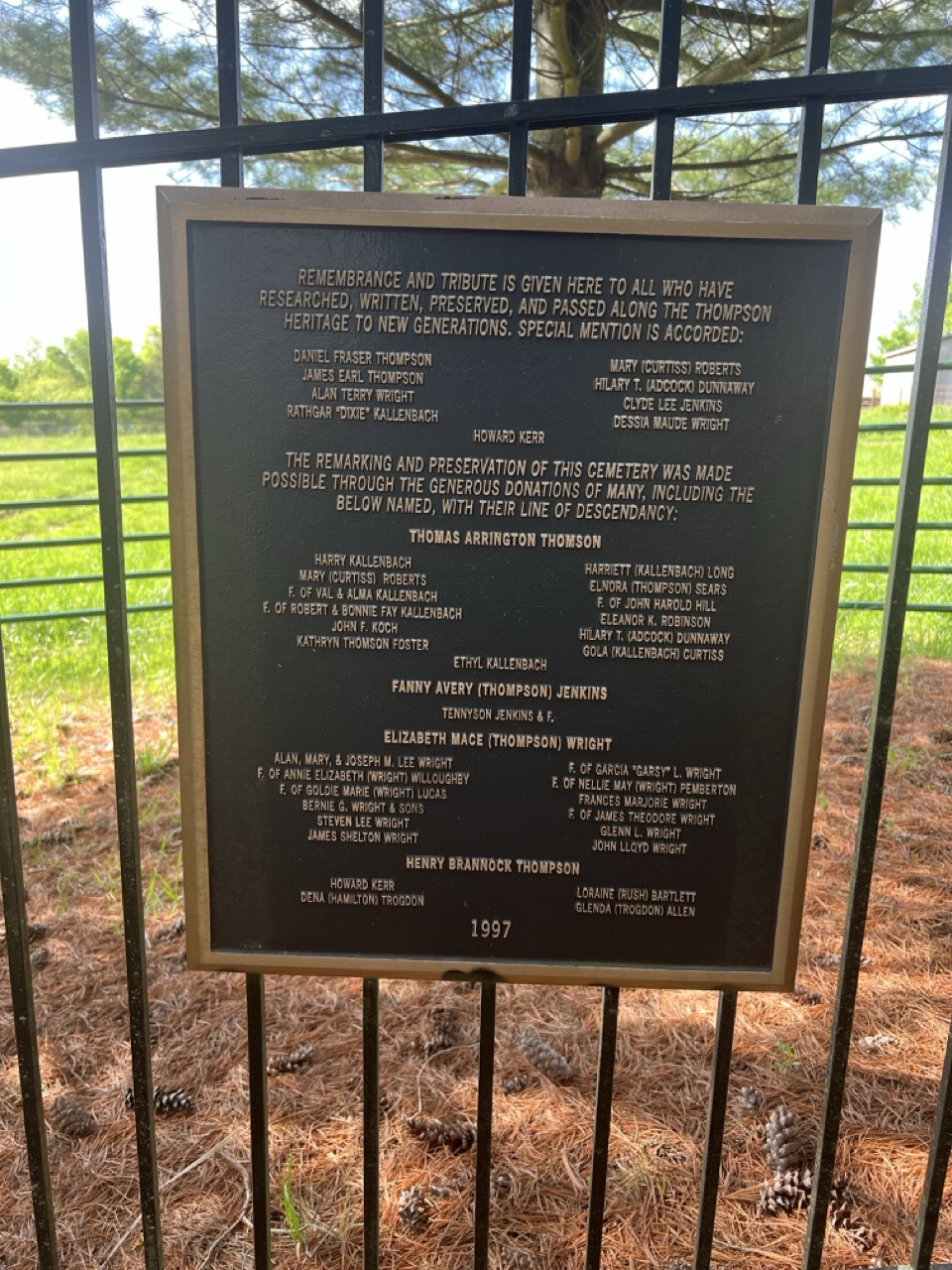Henry Tomson
1787-1862

![]()
"We may set up our sectarian names and compound them, over,
and over again, with other sectarian epithets, but all that
every follower of Christ desires to be, at last, is a
Christian."
Henry Thompson.
![]()
The Life and Times Of Henry Tomson
Henry Thompson (later Tomson) was born March 11, 1787, at White Haven in Dorchester County, Maryland, into a family already marked by faith and service. He was the son of Thomas Thompson (1758–1827), a veteran of the American Revolutionary War who fought in Captain John Eccleston’s Company of the 2nd Maryland Regiment, and his wife Priscilla Mace (1762–1827). The Thompsons traced their roots to Perthshire, near Glasgow, Scotland. From there the family had migrated to the Bermuda Islands, then, in 1634, joined the Calvert expedition to Maryland, settling on Kent Island and on the eastern shore of Chesapeake Bay, where they remained for nearly two centuries.
Sometime in the 1790s, Thomas moved his family south to Rockingham County, North Carolina, where he served as a Methodist preacher. In that setting Henry grew up in a home steeped in Methodist teaching and disciplined piety. He received an education that included poetry, music, and theology, and early determined, like his father, to enter the Methodist ministry.
On December 31, 1807, Henry married Elizabeth Lee, born March 20, 1791. Her parents were Rev. Willoughby Lee and Fanny Avery Cryer, and like Henry’s family, the Lees had roots in Dorchester County, Maryland; some sources even connect them distantly to the family of Robert E. Lee. Whether born in Maryland or North Carolina, Elizabeth shared Henry’s religious background and pioneer spirit. Together they would have a large family—at least thirteen children—several of whom, and many more of their descendants, would follow them into Christian ministry.
Minister, Soldier, and Frontier Teacher
Henry’s formal ministry began in the Methodist Episcopal Church. He was ordained a deacon at a conference in Raleigh, North Carolina, on January 13, 1816, and later ordained an elder on April 5, 1824. During the War of 1812, he served two months and seventeen days in the Tennessee militia, not merely as a soldier but as a chaplain, ministering to men in the hardships of military life.
Around 1825 Henry and Elizabeth left North Carolina and moved west to Hardeman County, Tennessee. There, on the frontier, Henry farmed and hunted to support his family, but he also became one of the earliest, and perhaps the very first, schoolteachers in that part of Tennessee. He taught “the rule of three” and other fundamentals in subscription schools, bringing education to children in a rugged and largely unsettled region. At the same time he preached among the scattered Methodist families in their wilderness homes, combining the roles of farmer, teacher, preacher, and family man.
A Crisis of Conviction and a Change of Allegiance
While living in West Tennessee, Henry’s careful study of Scripture began to conflict with the doctrines and structure of the Methodist Episcopal Church. He came into contact with early leaders of a reform movement—men such as Abner Hill, James E. Matthews, and Mansel W. Matthews—who were calling believers back to the Bible alone as the sufficient rule of faith and practice.
The tension in Henry’s mind and conscience grew. He watched what he believed to be abuses in church government and felt that reform-minded brethren were treated harshly. At the same time, God allowed heavy personal sorrows into his life, including the death of his eldest son, William, on November 1, 1829 at the age of 21. These trials deepened his reflection and prepared him for a difficult break with the church of his forefathers.
On January 8, 1830, Henry wrote a thoughtful, deeply personal letter to the Rev. Thomas P. Davidson, preacher in charge of Wolf Circuit, formally withdrawing from the Methodist Episcopal Church. In it he expressed respect for Methodist doctrine and affection for Methodist people, but made clear he could no longer, in good conscience, support the existing system of church government. He confessed that he was unwilling to die without letting his children, neighbors, and countrymen know he believed there was “a radical error” in that government. Shortly afterward, he surrendered his Methodist credentials and chose to stand on the Bible alone.
By the end of that same year he was preaching among the Reformers, committed to what he understood as simple New Testament Christianity, stripped of human creeds and denominational structures. His later renunciation of Methodism and adoption of the simple Christian name were memorialized in a printed pamphlet, along with a poetic address explaining his convictions and the pain of his decision.
In time Henry became associated with churches of Christ. He served as an elder at New Hope church of Christ in Hardeman County and later as a minister among congregations in Missouri. His transition from Episcopal Methodist minister to restoration preacher would influence not only his own ministry, but generations of preachers among his descendants.
Pioneer, Poet, and Missouri Homesteader
In the late 1830s, Henry and Elizabeth again pushed westward. Traveling by ox wagon from Tennessee, they settled first in Benton County, Missouri, near Warsaw. After about two years they moved on to Illinois, then Indiana, and then back into Missouri—living for a time in Cole County, then Saline County. Finally, sometime between 1838 and 1842, Henry made his last move, settling permanently in Cole County.
There he homesteaded forty acres about one mile west of present-day Brazito, north of Hickory Hill, in Clark Township. On this land he built two one-room log houses, each with a stone fireplace, connected by a roofed breezeway—a practical and characteristic frontier arrangement. This farm would be his home for the rest of his life and ultimately his resting place.
It was during his years in Missouri that Henry altered the spelling of his surname from “Thompson” to “Tomson.” He continued to labor as a gospel preacher, teacher, and writer. He wrote for the Bolivar Statesman and the Western Statesman while in Tennessee, and later for a Jefferson City paper in Missouri. At the same time, he preached for churches in the region; local histories record him as one of the early preachers at Salem church and note that in 1852 a church organized at Vernon with Henry Tomson as its preacher.
A Literary Voice of the 19th Century
Beyond his preaching, Henry is remembered as a poet of unusual productivity and insight. He wrote long narrative poems and reflective pieces on moral, social, political, and international issues of his day. Much of his poetry and prose has been preserved and is now housed in the Missouri Historical Society Archives in St. Louis.
In 1989, his descendants—represented by Mary L. Curtiss Roberts of Richmond, California, and Alan Wright of St. Louis—donated his manuscripts and books to the Historical Society. Archivist Peter Michel described Tomson as “a very perceptive man who wrote in long poetry about life in his own country, and international events.” One notable work is a fifty-page epic titled “A Poem for the New Year,” written at the close of 1856, in which Henry commented on matters ranging from the Crimean War in Russia to local politics in Cole County.
Another major work, “The Capers of Sots,” focuses on the evils of alcoholism, describing the tavern culture, violence, and ruined lives associated with drunkenness. His writings provide a vivid window into the moral and social upheavals of mid-19th-century America. Michel called the collection “a remarkable record of life at that time in the mid 19th century, and of Cole County,” particularly valuable because it captured the thoughts and feelings of a thoughtful “common man,” not a politician writing for public posterity.
In the late 1980s, two volumes of his poetry—The Capers of Sots and The Collected Poetry of Henry Tomson—were published by his descendant Mary Lou Roberts, helping to bring his literary work to a wider audience among family and researchers.
A Legacy of Faith and Influence
Henry and Elizabeth’s large family left a deep mark on both religious and community life in the regions where they lived. Several of their children and grandchildren became preachers of the gospel. Their son Willoughby Lee Thompson (1816–1893) was a long-time preacher and singing school teacher at New Hope Church of Christ in Hardeman County, known for his powerful voice and musical gifts. Another son, Thomas Arrington Thompson (1810–1898), though not a preacher himself, fathered two gospel preachers: Josiah Henry Dockery Tomson (1837–1913) and Greene Lee Thompson (1838–1918). Josiah, for example, not only preached widely in central Missouri but also edited religious papers while living in Tuscumbia. In the 1870s, he and his cousin, James Pinkney Wright, published The Gospel Proclamation. In 1879 the name was changed Good Tidings. Josiah later edited, The Miller County Vindicator.
Many of Henry and Elizabeth’s descendants remained in central Missouri and west Tennessee, bearing names such as Tomson, Thompson, Thomson, Wright, Robinson, Kallenbach, Curtiss, and others. Through both their bloodlines and their writings, Henry and Elizabeth helped shape the spiritual landscape of multiple communities, especially within the Churches of Christ.
Final Years and Passing
Henry Tomson lived through extraordinary times. Born just a few years after the Constitution was ratified, he saw the first sixteen presidents of the United States rise to office and identified politically as a Republican in the era of Abraham Lincoln, the last president he lived to see. Through war, westward expansion, religious controversy, and social change, he remained committed to what he believed was simple New Testament Christianity and to the moral renewal of his country.
Elizabeth preceded him in death on May 24, 1857, and was buried on their farm in Cole County, Missouri. Henry died on January 22, 1862, at the age of seventy-four or seventy-five, a veteran of the War of 1812, a pioneer schoolteacher, a reforming preacher, and a poet. He was buried beside Elizabeth in the family cemetery near the log house he had built, just west of Brazito, Missouri. In 1998, a marker was placed at his grave, acknowledging the life and legacy of a man whose faith, courage, and pen have continued to speak long after his death.
-Scott Harp, 11.10.2025
Sources: Family histories collected by Warren Pemberton (1938-2023), Lebanon, Laclede County, Missouri / “The Faith And Times Of Henry Tomson” Tennyson C. Wright / “The Collected Poetry Of Henry Tomson, Compiled by Mary L. Roberts / New Hope Church Of Christ History compiled by Alta Davidson
![]()
For The National Banner: Tomson's Poems
National Banner and Nashville Whig, Nashville,TN,
Saturday, April 21, 1827, p.1
![]()
Godliness And Contentment
Weekly Jefferson Inquirer, Jefferson City, Missouri
Thursday, January 28, 1841, p.3
![]()
The Name Christian
Eld. Henry Tomson
Miller County Vindicator, Tuscumbia, Missouri
Friday, February 2, 1879, p.1
![]()
Poetry Of Tomson Now Available
The Miller County Autogram Sentinel,
Tuscumbia, Missouri
Thursday, November 26,1987, p. 25
![]()
Henry Tomson Poem On General Nathaniel Greene

Missouri State Times, Jefferson City, Mo,
Saturday, February 23, 1856 p.4
(Transcribed Below)
Henry Tomson Poem On General Nathaniel Greene
Mr. Corwin—I send you for publication a few verses in reference to Gen. Nathaniel Greene, one of the heroes of the Revolution, with a request that such editors in the United States as approve of their composition will please to give them further publicity, at least for the make of the subject. Yours,
H. TOMSON.
Greene! In the silent tomb he lies,
Escaped from all the din of strife;
No more before his troops he flies,
And cheers them on to fight for life!
His noble heart no more is pained,
Because of England's cruel reign;
He fought, he saw the vict'ry gained.
By means of many a warrior slain!
He saw the tree of freedom rise,
Expanding o'er the States, how gay !
He kissed with joy the blooming prize,
And half forgot the bloody fray!
Then lo! as if on earthly ground,
’Twas all the sight he wished to view,
He bowed his bead, with laurels crowned,
Away to distant worlds he flew!
Among the native captains bold,
Who in their country's cause believed,
And back the tide of conquest rolled,
Till Independence was achieved;
Greene! next in war to Washington,
His fame shall live a glorious fire,
Long as Columbia has a son,
To tune the poet's pleasing lyrel
Long as the mem’ry of that day,
When patriot States themselves to free
Rose up in resolute array,
And bade this mighty nation be!
Courageous, active, and discreet,
He bravely did what could be done;
And oft he soared above defeat,
As though he had the battle won!
The flame that glowed within his breast,
May animate a thousand more,
While heroes rise and sink to rest,
And glory spreads from shore to shore,
But much as any may possess
Attention, in the passing scene,
Rejoicing millions still shall bless,
And culogize the name of Greene.
-Missouri State Times, Jefferson City, Mo. February 23, 1856, p.4
![]()
The Eight Of January
Henry Tomson

(Click Article To Read)
Weekly Jefferson Inquirer Jefferson City, Missouri
Wednesday, April 29, 1846, p.4
![]()
The Tomson Homeplace
Old Photos Provided by Warren Pemberton & Lisa Pemberton Carr
__________________
Photos From May, 2025
Main Part Of Home Is No More, Except Part Of Old Chimney And Cook House
Chimney from old home - Lisa and Alyssa Carr looking on
Old Cooking Kitchen Is All That's Left Of The Old Tomson Home
![]()
Directions To Grave
From Jefferson City, Missouri, head south on Hwy. 54, for 13 miles until you get to Brazito. Turn right on W. Brazito Rd. Go 8/10 of a mile and enter a driveway on the left. There will be a cattlegate that you have to go through here. Go. 3/10th of a mile. There will be a farm house there. You can knock on the door, but anyone going to the grave has permission. If no one is there you can go to the rear of the house and to your left to another cattle gate. You can drive down into the field to a large cattle fenced area around some pine trees. This is where you will find the Tomson Cemetery. NOTE: (Just make sure cattle gates are closed behind you as you move through the property.) Also, the owners of the property are located back out on the highway and back to the right in the very next driveway. So, you may want to stop there first to ask permission to enter.
GPS Location
38°26'27.6"N 92°19'07.1"W
or D.d. 38.440992, -92.318628
![]()
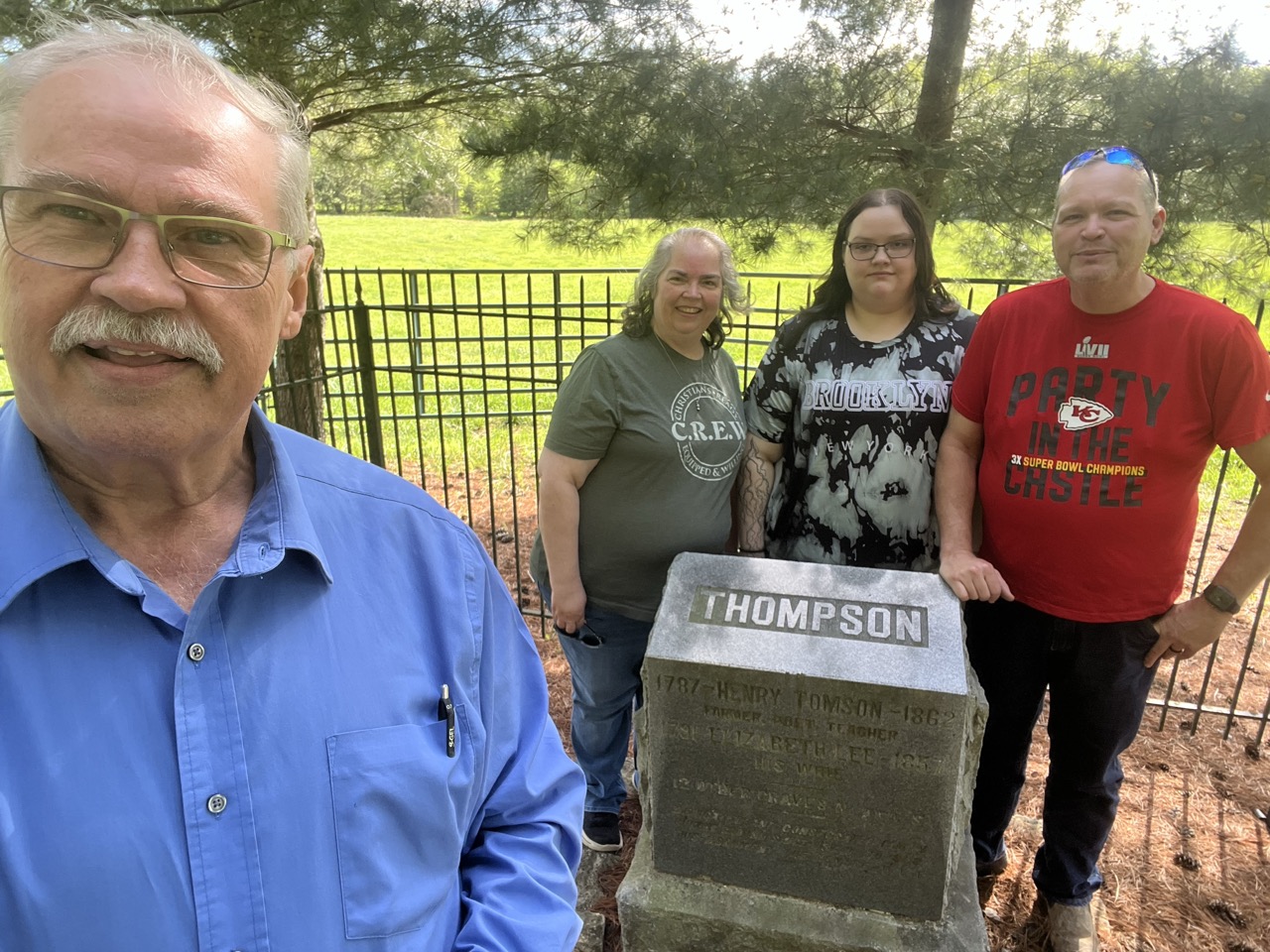
Scott Harp with Lisa, Alyssa & Scott Carr
- Great friends and helpers in locating the graves of Henry & Elizabeth Tomson
THOMPSON LEE
His Mem’ry Shall Not Be Forgot,
Till Ages Yet Have Mounted Higher,
And Sacred Long Shall Be The Spot,
Where Sleeps In Death My Rev’rend Sire. H.T.–1827
She Openeth Her Mouth With Wisdom;
And In Her Tongue Is The Law Of Kindness.
Her Children Arise Up And Call Her Blessed;
Her Husband Also, And He Praiseth Her. Proverbs 31
HERE REST HENRY TOMSON, B. DORCHESTER CO. MD, 11 MAR. 1787, D. COLE CO. MO, 22 JAN. 1862; HIS WIFE,
ELIZABETH LEE, B. DORCHESTER CO. MD, 20 MAR. 1791, D. COLE CO. MO, 24 MAY 1857; AND BELOVED CHILDREN OF :
THOMAS A. AND KERENHAPPUCH THOMSON: DAU., UNNAMED, B. AND D. ABT. 16 JULY 1860 AND OLIVER GOLDSMITH, B. 19 OCT. 1861, D. 19 JULY 1862;
JOSIAH H.D. AND MARY A. TOMSON: HENRY LEE, B. 20 MAR. 1858, D. 1859; JOSEPH MASON, B. 1861, D. 1861 AND JOHN DANIEL GREENE, B. AND D. UNK.;
GREENE L. AND ELIZABETH TOMSON: MARTHA MATILDA, B. 13 OCT. 1860, D. 20 NOV. 1861 AND JOHN THOMAS, B. 31 JULY 1862, D. 3 OCT. 1863.
BURIED AT OR NEAR THIS LOCATION:
VALENTINE JENKINS, HUSBAND OF FANNY A. THOMPSON, B. UNK., D. 6 AUG. 1844 AND THEIR BELOVED CHILDREN: JAMES VALENTINE, B. 30 MAY 1841, D. BEFORE 1850 AND THOMAS JEFFERSON, B. 6 AUG. 1843, D. BEFORE 1850.
![]()
HENRY AND ELIZABETH TOMSON WERE PIONEERS OF NORTH CAROLINA, TENNESSEE AND MISSOURI. THEIR FINAL HOME, A TWO STORIED LOG HOUSE, STOOD 155 YARDS NW OF THIS SITE. FIREPLACE STONES FROM THAT STRUCTURE ENCLOSE THIS MONUMENT.
HENRY WAS THE SON OF THOMAS THOMPSON AND PRISCILLA MACE OF DORCHESTER CO. MD. THOMAS SERVED AS A PRIVATE, 2ND REG., 2ND MD BRIGADE, WAR OF THE REVOLUTION. THIS REGIMENT’S DISTINGUISHED SERVICE INCLUDED A HEROIC STAND AGAINST OVERWHELMING BRITISH FORCES AT CAMDEN, SC. 16 AUG. 1780. THOMAS AND PRISCILLA THOMPSON MOVED THEIR FAMILY TO ROCKINGHAM CO. NC IN 1794.
ELIZABETH LEE, DEVOTED WIFE OF HENRY TOMSON, WAS THE DAUGHTER OF THE REV. WILLOUGHBY AND FANNY (CRYER) LEE. SHE MARRIED HENRY IN ROCKINGHAM CO. NC, LICENSE DATED 21 DEC. 1807. ELIZABETH AND HENRY BECAME THE PARENTS OF:
WILLIAM, 1808-1829; THOMAS ARRINGTON, 1810-1898; JOHN, 1811-1834; FANNY AVERY (JENKINS), 1814-1889; WILLOUGHBY LEE, 1818-1883; SARAH (ROSE), 1818 - BEFORE 1862; ELIZABETH MACE (WRIGHT), 1820-1874; HENRY BRANNOCK, 1823-1883; JAMES CUNNINGHAM, 1825-1868; JOSEPH COE, 1828 - AFTER 1862; MILTON GREENE, 1830-1903; JACKSON GARRETT, 1832-1855; IRENE ANNE (HARRISON), 1835-1879.
A VETERAN OF THE WAR OF 1812, HENRY WAS ORDAINED AN ELDER OF THE METHODIST EPISCOPAL CHURCH IN 1824. HENRY AND ELIZABETH MOVED THE FAMILY TO HARDEMAN CO. TN IN 1825. IN 1830, HENRY RENOUNCED METHODISM AND BECAME AN ELDER OF THE CHURCH OF CHRIST.
BY 1839, HENRY HAD CHANGED THE SPELLING OF HIS NAME TO TOMSON, PROCLAIMING THE H AND P TO BE “USELESS LETTERS”. HIS DESCENDANTS USE VARIOUS SPELLINGS. ABT. 1840, THE TOMSONS SETTLED IN COLE CO. MO.
HENRY PREACHED THE GOSPEL, ORGANIZED CHURCHES, TAUGHT SUBSCRIPTION SCHOOLS AND FARMED THE LAND. HE WAS A PROLIFIC WRITER OF POETRY WHOSE HANDWRITTEN MANUSCRIPTS RESIDE AT THE MISSOURI HISTORICAL SOCIETY, ST. LOUIS, MO.
THIS CEMETERY REDEDICATED 31 AUG. 1997 —— A.T.W.
REMEMBRANCE AND TRIBUTE IS GIVEN HERE TO ALL WHO HAVE
RESEARCHED, WRITTEN, PRESERVED, AND PASSED ALONG THE THOMPSON
HERITAGE TO NEW GENERATIONS. SPECIAL MENTION IS ACCORDED:
DANIEL FRASER THOMPSON
JAMES EARL THOMPSON
ALAN TERRY WRIGHT
RATHGAR “DIXIE” KALLENBACH
MARY (CURTISS) ROBERTS
HILARY T. (ADCOCK) DUNNAWAY
CLYDE LEE JENKINS
DESSIA MAUDE WRIGHT
HOWARD KERR
THE REMARKING AND PRESERVATION OF THIS CEMETERY WAS MADE
POSSIBLE THROUGH THE GENEROUS DONATIONS OF MANY, INCLUDING THE
BELOW NAMED, WITH THEIR LINE OF DESCENDANCY:
THOMAS ARRINGTON THOMSON:
HARRY KALLENBACH
MARY (CURTISS) ROBERTS
F. OF VAL & ALMA KALLENBACH
F. OF ROBERT & BONNIE FAY KALLENBACH
JOHN F. KOCH
KATHRYN THOMSON FOSTER
HARRIET (KALLENBACH) LONG
ELNORA (THOMPSON) SEARS
F. OF JOHN HAROLD HILL
ELEANOR K. ROBINSON
HILARY T. (ADCOCK) DUNNAWAY
GOLA (KALLENBACH) CURTISS
ETHYL KALLENBACH
FANNY AVERY (THOMPSON) JENKINS:
TENNYSON JENKINS & F.
ELIZABETH MACE (THOMPSON) WRIGHT:
ALAN, MARY, & JOSEPH M. LEE WRIGHT
F. OF ANNIE ELIZABETH (WRIGHT) WILLOUGHBY
F. OF GOLDIE MARIE (WRIGHT) LUCAS
BERNIE G. WRIGHT & SONS
STEVEN LEE WRIGHT
JAMES SHELTON WRIGHT
F. OF GARCIA “GARSY” L. WRIGHT
F. OF NELLIE MAY (WRIGHT) PEMBERTON
FRANCES MARJORIE WRIGHT
F. OF JAMES THEODORE WRIGHT
GLENN L. WRIGHT
JOHN LLOYD WRIGHT
HENRY BRANNOCK THOMPSON:
HOWARD KERR
DENA (HAMILTON) TROGDON
LORAINE (RUSH) BARTLETT
GLENDA (TROGDON) ALLEN
1997

1787-Henry Tomson-1862
Farmer, Poet, Teacher
1791-Elizabeth Lee-1857
__________
12 Other Graves N. and S.
__________
Dedicated And Consecrated Family
Blessed Ground Since 1840 to 1862
This Monument The Centre - O.F.T.
![]()
Photos Taken 05.04.2025
Webpage Produced 11.10.2025
Courtesy Of Scott Harp
www.TheRestorationMovement.com
Special Recognition: The name of Henry Tomson began to be introduced to me in the early 2000s through my partner in history preservation and friend, Tom L. Childers. At the time, he was preaching for the New Hope church of Christ in Hardeman County, Tennessee. It was then that I heard about the great Henry Tomson who studied his way out of Methodism to take his stand on the Bible alone. Upon visiting the location of the church on one occasion, Tom showed me the grave of long-time church leader/preacher, Willowby Lee Thompson (1819-1893). I soon desired greatly to go to Missouri to find the grave of Henry Tomson. A number of years after producing a webpage for W. L. Thompson, I was contacted, around October, 2019 by a descendant of Henry Tomson, Warren Pemberton, of Lebanon, Mo. A good friendship developed with both of desiring that I would come to Missouri which would allow him the time to take me to the grave of his ancestor. Finally, an opportunity was set when the brethren at South Hwy. 5 church of Christ invited me to hold a gospel meeting in the spring of 2025. Unfortunately, Warren Pemberton died two years before the meeting, September 25, 2023. When the meeting finally took place, I had the pleasure of meeting Warren's son and daughter, David Pemberton and Lisa Pemberton Carr. On the Sunday of the meeting's beginning, I had lunch sitting across from David and Missy Pemberton. After the afternoon session of the meeting, Lisa approached me about going to find the grave of her ancestor, Henry Tomson. I jumped at the opportunity. So, her husband Scott drove me, Lisa, and their daughter in his new blue Dodge Ram pickup the seventy mile trip to Brazito County. The expedition was well worth the effort. We soon found the graves we'd been wanting to see. Since our trip, Lisa has shared a good bit of information with me that helped in producing this webpage. So, this page has been in the works since I began hearing the name of Henry Tomson, as early as the year 2007, or perhaps earlier. Many thanks to all involved.
![]()

